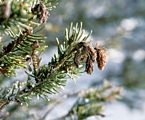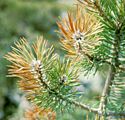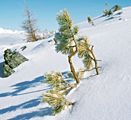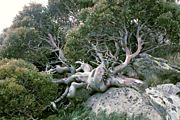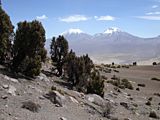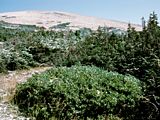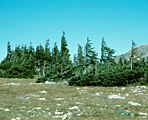Factors unlikely to be responsible for the global treeline phenomenon
The position of treelines is not driven by
- frost resistance and pathogen resistance (but partial frost damage does occur here and there, see Fig. 1, 2)
- seed availability or seedling establishment (hence the many crippled trees above treeline which do not become trees, see Fig. 4-8)
- winter-related factors (e.g. winter drought on frozen ground; see Fig. 3), given that tropical treelines (with no winter) are formed at similar temperatures as temperate and subarctic treelines.
- This also removes season length as a key driver. Treelines are found at the same growing season temperature of 6±1 °C in a 10 weeks season in North Sweden and in a 12 months season at the equator.
- Except for arid mountains, the drier (sunnier) the region, the higher the elevation at which treelines are found, removing water as a potential common driver. The maximum altitude of tree existence is close to 5000 m in semiarid northern Chile (Polylepis) and Tibet (Juniperus).
Captions
Stress and pathogens in the treeline ecotone
- Late frost damage in spring (note: the current season flush has been killed and turned brown).
- Fungal infections. Swiss treeline at 2250 m.
- Winter desiccation. Austrian treeline at 2100 m.
"Krummholz" above treelines
- Eucalyptus pauciflora, 2050 m, Mt. Perisher, Snowy Mts., Australia.
- Polylepis tarapacana, 4810 m, Sajama, Bolivia.
- Pinus flexilis, Abies lasciocarpa, Picea engelmannii, 3400 m, Niwot Ridge, Colorado, Rocky Mts. Front Range.
- Tree islands of Picea engelmannii, 3350 m, Medicin Bow Mts., Rocky Mts., Wyoming.
- Pinus mugo, 1900 m, Lechtal Alps, Austria.
In summary, not all regions of the world have treeline species which can survive at the climatic treeline. In regions which have such taxa, the position of the treeline is determined by a globally common factor (temperature) plus regionally variable (modulating) factors (other climate components, soil or biotic factors). The climatic treeline is found at a mean growing season temperature of c. 6.4 ± 0.7 °C.
